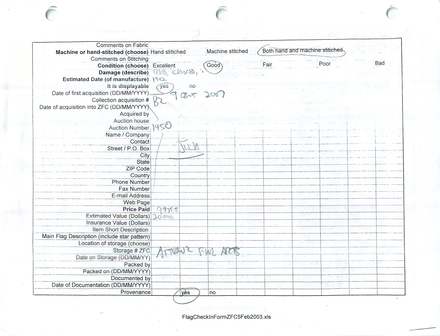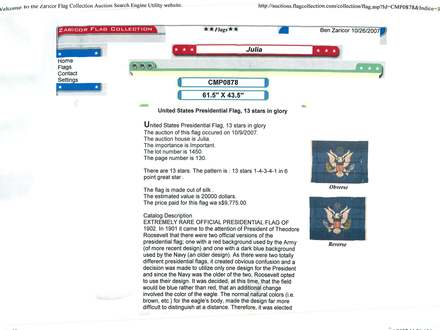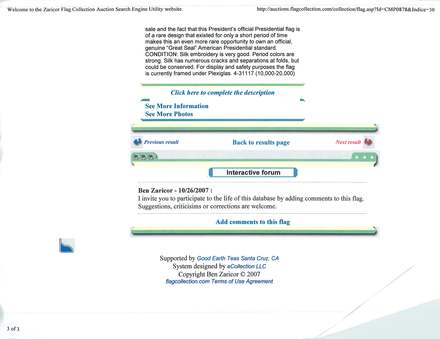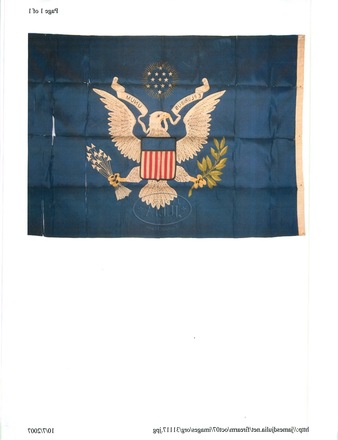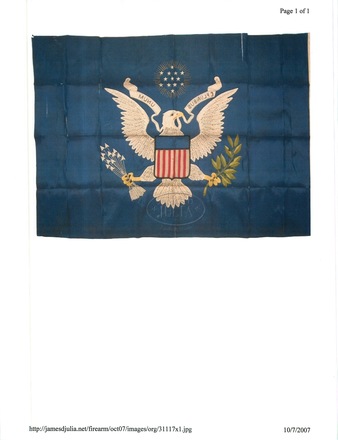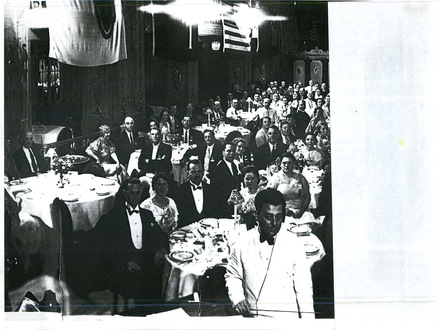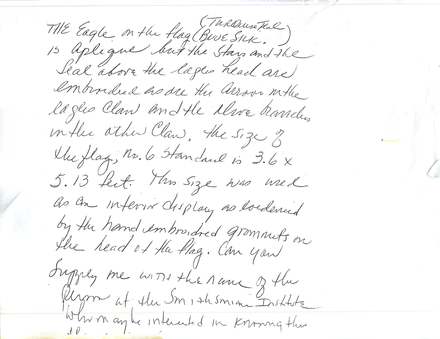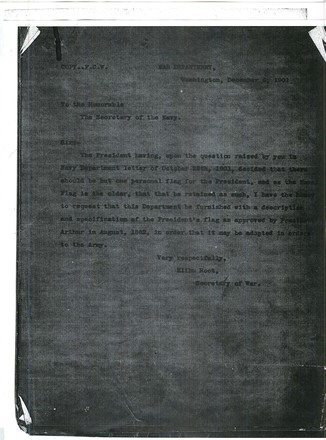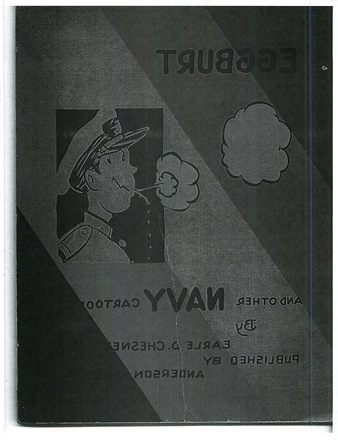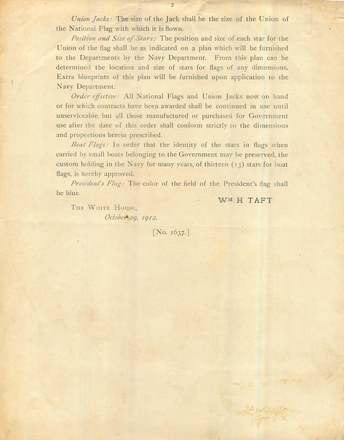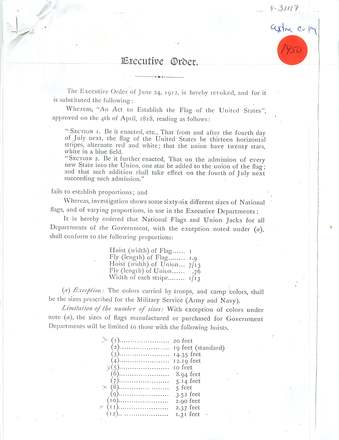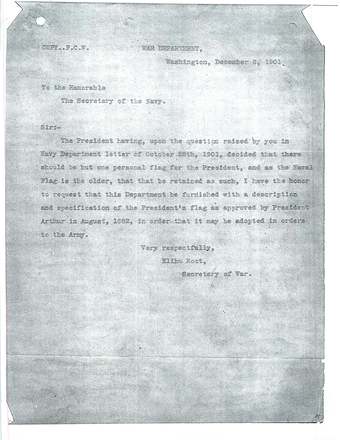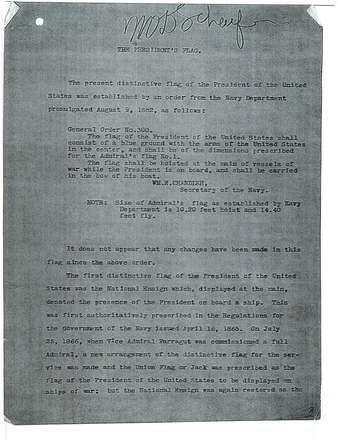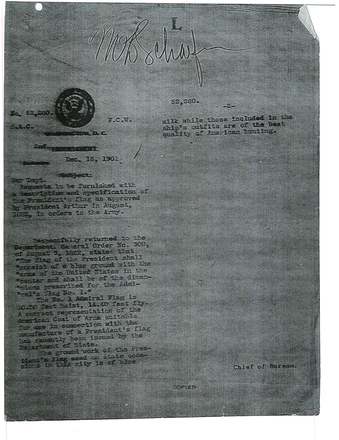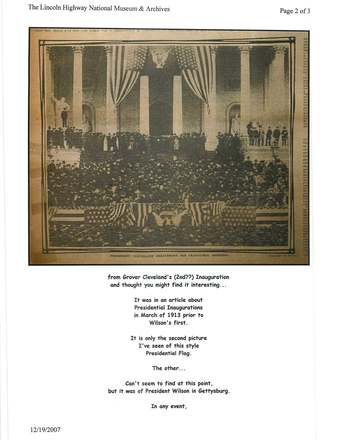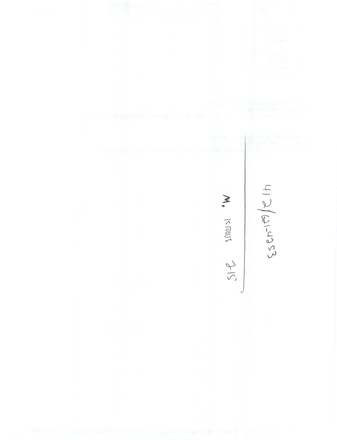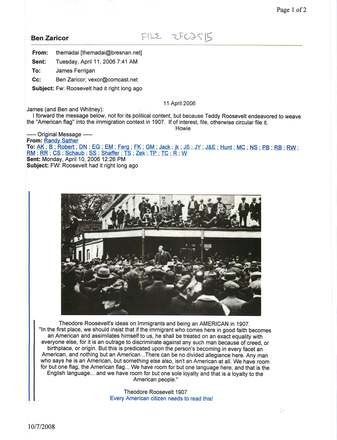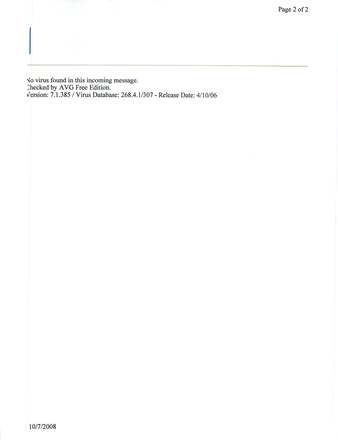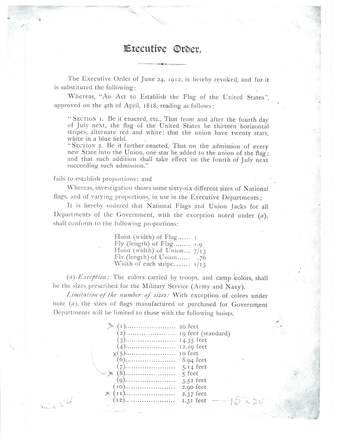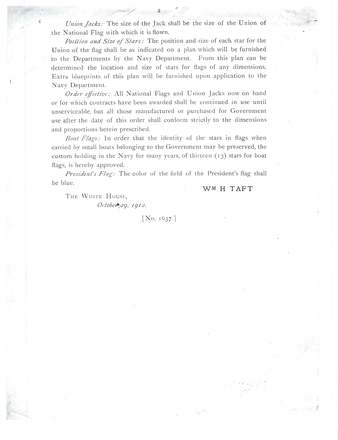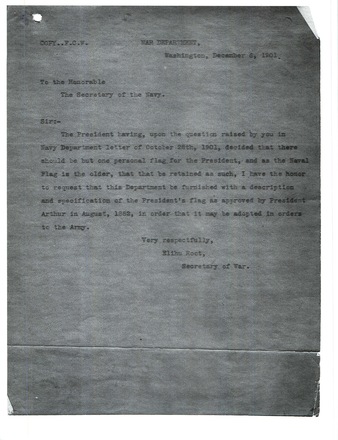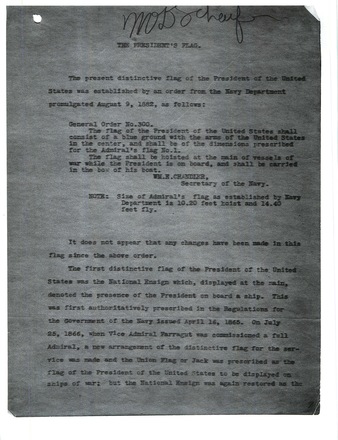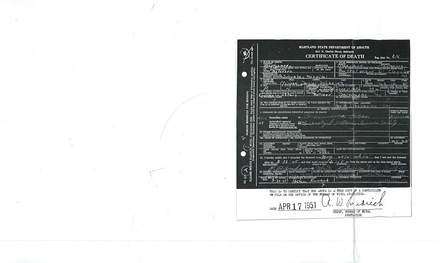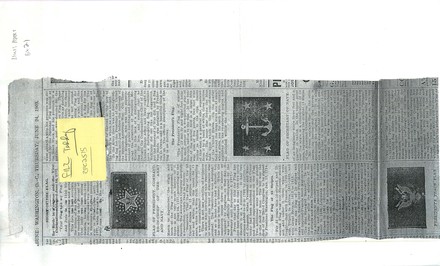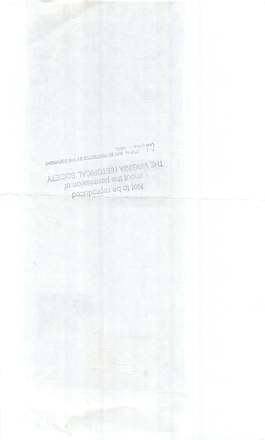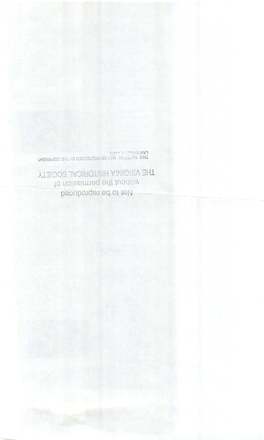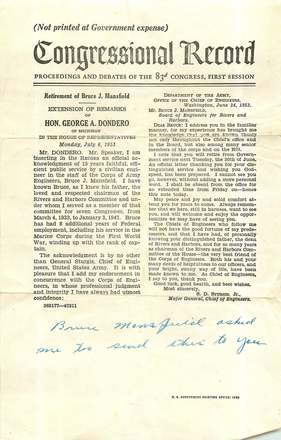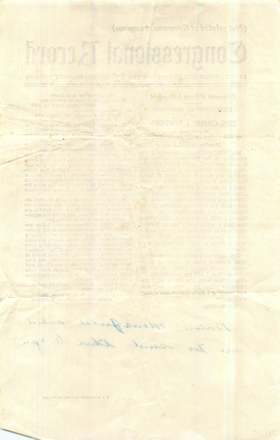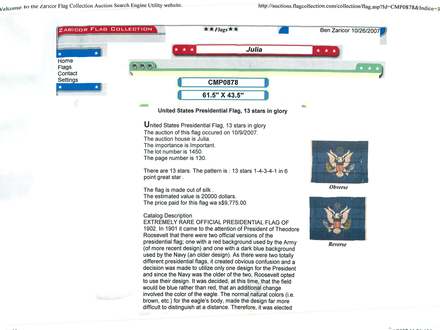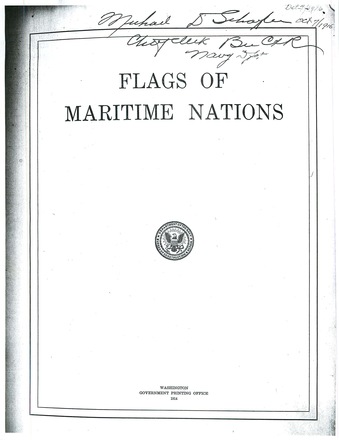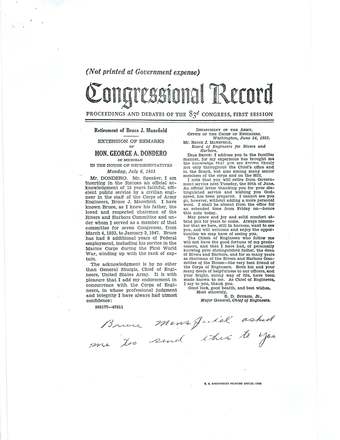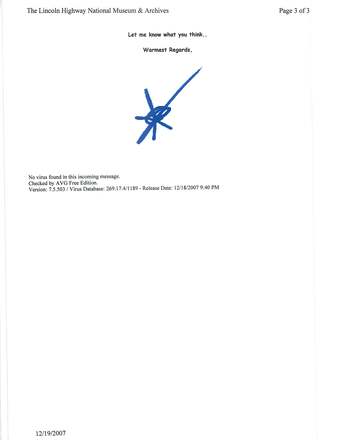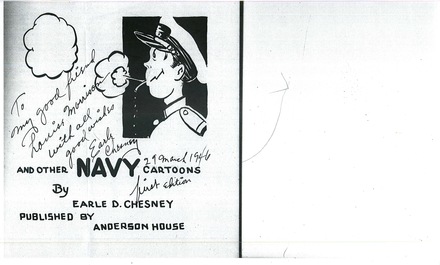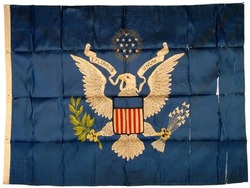

Obverse
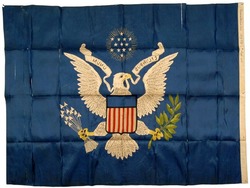
Reverse
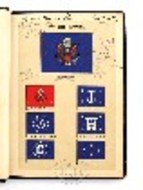
Flags of Maeritime Nations 1899
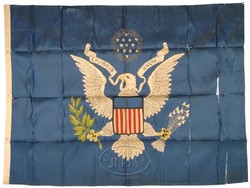
Obverse watermarked
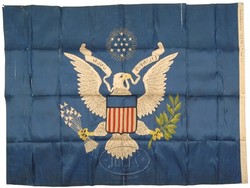
Reverse watermarked
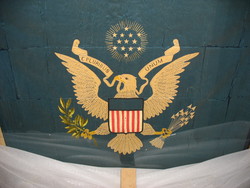
Arrival Photo
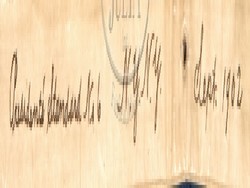
Catalog hoist detail
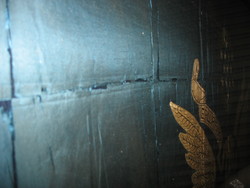
Arrival Photo - 2

Arrival Photo - 3
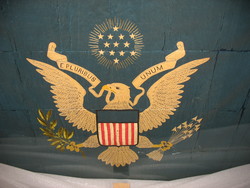
Arrival Photo - 4
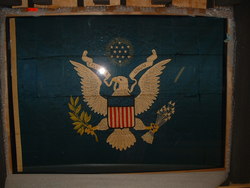
Obverse - 2
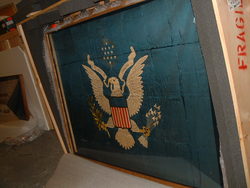
Obverse oblique

Obverse oblique - 2
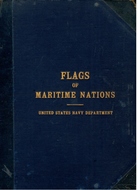
Provenance

Provenance - 2

Provenance - 3
Presidential Flag Theodore Roosevelt, 1902
Sub-collection: U.S. PresidentialUS Presidential Flag of Thedore Roosevelt
This embroidered silk Presidential Flag was made in 1902, but has its origins in almost a century before. In 1818, Capt. Samuel Reid, a privateer hero of the war of 1812, drew a suggestion for what he styled as the "Standard of the United States." He designed a quartered flag bearing a different emblem in each quadrant: a Grand Luminary star composed of smaller stars representing the states of the Union; Miss Liberty; and an American eagle with a field of 13 red & white stripes. He intended that this flag would be used to indicate the presence of the President of the United States. If it had been adopted it would have been the first flag for the Office of the President.
Capt. Ried's idea would have to wait for 64 years before a distinctive flag for the office of president was created. The paucity of US Presidential flags in the first three quarters on the 19th century would be remedied by the proliferation of their designs in the 34 years between 1882 and 1916.
In 1882 the US Navy adopted a Presidential Flag, "a blue ground with the coat of arms of the United States in the center." The US Army followed suit in 1898 with the adoption of an Army Presidential Flag & Color, "scarlet with the United States arms, in color, on a large dark blue star bordered in white; this was surrounded by 45 small white stars scattered around it, representing the states of the Union." Thus the United States was in the unusual position of having two flags to represent one Commander-in-Chief, one naval the other military. In 1899 the Navy flag was altered to a full color version which, like the Army flag, utilized the full color version of the US Arms as rendered by Tiffany's for the State Department in 1885.
In 1901, the naval attaché of the Imperial German Embassy in Washington inquired at the Office of Naval Intelligence as to the proper protocol for dual flags when rendering honors abroad for the US President. President Roosevelt decided that there should be only one flag for the president and he subsequently chose the more senior naval flag. The army complied and began to use the naval flag as well, but retained their previous design as their Presidential Color. Thus both designs continued to be used concurrently.
The situation became further confused in May of 1902 when this design (ZFC2515) for the Presidential Flag was introduced. It retained the Navy's blue ground, but made several stylized adaptations to the arms, minor ones to the stars and scroll and, the most significant change, a rendering of the American eagle of the Presidential arms in snow-white, stitched black. Intended for peace time ceremonial use, the flag would be hoisted upon a presidential visit to all military installations; however in time of war, each service would revert to their respective presidential flags and colors. The United States now had three designs in concurrent use, a situation which would continue until 29 May 1916 when President Woodrow Wilson issued Executive Order 2390, establishing one flag for all purposes of both the Navy and Army.
This Presidential Flag was meticulously sewn and embroidered at the New York Navy Yard in November of 1902, only six months after the flag was authorized by President Theodore Roosevelt. Its size indicates that it was a Boat Flag. According to the attribution accompanying the flag, it was used by President Roosevelt between 1902 and 1909. The flag was formerly in the possession of the retired Chief Clerk of the Navy Department's Bureau of Construction and Repair Michael D, Schaefer. According to family affidavits the flag was gifted to him by President Franklin D. Roosevelt on the occasion of his retirement in 1945. It should be noted that both Theodore and Franklin Roosevelt were interested in all things naval, both having served as Assistant Secretary of the Navy and both likely familiar with Mr. Schaefer.
Mr. Schaefer had a long and distinguished career as a civilian draftsman and naval architect for the US Navy. He started in 1906, and within a decade had risen to Chief Clerk. Although primarily charged with ship design, Schaefer was avidly interested and involved in the changes to the Presidential Flag prior to 1916 as evidenced by his personal notes in his copy of the 1914 edition Flags of Maritime Nations, which accompanied this flag (see ZFC2805).
According to family lore he was involved with the design of this flag; however, he started at the Navy Department after Theodore Roosevelt had already authorized this design, and so it seems likely that the family confused his subsequent involvement in presidential flag design, with this flag. However, there is no doubt that it was his overall involvement that prompted the presentation of this flag as a gift to a long-time government employee.
The significance of this design lies in the fact that it set the precedent for the use of an alternate to the US Arms, the US Presidential Arms, and was also the origin of the white eagle used from 1916 until 1945.
ZFC Significant Flag
Item is Framed
Provenance:
• Made by United States Navy, Brooklyn Navy Yard, November 1902.
• Used by U.S. Navy until obsolesce in 1916, retained until gifted in 1945.
• Presented to retired Chief Clerk of the Navy Department's Bureau of Construction and Repair Michael D. Schaefer upon his retirement, 1945
• By descent to Michael D. Schaefer's grandson Brad Northern until 2007.
• Sold via James D. Julia Auctions of Fairfield, ME to Zaricor Flag Collection, 2007.
Sources:
Ball, Israel Worrell, "The Story of the Flag", National Tribune, Washington DC, 24 June 1909.
Harrison, Peleg Dennis, The Stars and Stripes and other American Flags, Boston, S.J. Parkhill, 1906.
United States Navy Department, Flags of Maritime Nations, Washington
Government Printing Office, 1899.
United States Navy Department, Flags of Maritime Nations, Washington
Government Printing Office, 1914.
History of the President's Flag, Sea Flags, 31 October 2011, from:
http://mysite.verizon.net/vzeohzt4/Seaflags/personal/potus.html
President (U.S.), Flags of the World, 31 October 2011, from:
http://www.crwflags.com/fotw/flags/us-pres.html
Flag of the President of the United States, Wikipedia, 31 October 2011, from:
http://en.wikipedia.org/wiki/Flag_of_the_President_of_the_United_States
xyz
ZFCPOTUS
Hoist & Fly | |
|---|---|
| Width of Hoist | 43.5 |
| Length of Fly | 61.5 |
Stars | |
|---|---|
| Comments on Star Measurements | 13 five point stars in glory arranged 1-4-3-4-1, into a six point star |
Stripes | |
|---|---|
| Size of Hoist | 2 |
Frame | |
|---|---|
| Is it framed? | yes |
| Frame Height | 45 |
| Frame Length | 63 |
| Comments on Frame | "framed" in between two sheets of plexiglass with a wood frame. (Done by the auction house.) |
Stars | |
|---|---|
| Number of Stars | 13 |
| How are the stars embeded? | Embroidered |
| Are there stars on obverse? | yes |
| Are there stars on reverse? | yes |
| Star Pattern | 1-4-3-4-1 in a stylized glory |
Stripes | |
|---|---|
| Has a Blood Stripe? | no |
| Comments on Stripes | 13 Stripes on the U.S shield. |
Crest/Emblem | |
|---|---|
| Description of Crest/Emblem | Arms of U.S. President |
Nationality | |
|---|---|
| Nation Represented | United States |
Fabric | |
|---|---|
| Fabric | Silk |
| Comments on Fabric | fabric is fractured and dehydrated |
Stitching | |
|---|---|
| Stitching | Combination |
Thread | |
|---|---|
| Type of Thread | Needs Analysis |
| Thread Material | Needs Analysis |
Weave | |
|---|---|
| Type of Weave | Plain |
Attachment | |
|---|---|
| Method of Attachment | Headings & Grommets |
Applica | |
|---|---|
| Applique Sides | Single Faced = Mirror Image Reverse |
Documentation | |
|---|---|
| Documents | |
| Drawings |
All original documents and drawings are held in the Zaricor Flag Collection Archives.
|
| Research Documents | |
| Public Copy & Signs |
All original documents and drawings are held in the Zaricor Flag Collection Archives.
|
Condition | |
|---|---|
| Condition | Good |
| Damage | Flag is used with creased fracturing |
| Displayable | yes |
Date | |
|---|---|
| Date | 1902 |
Exhibits | |
|---|---|
| Exhibition Copy | Exhibition History Private Showing Night of Flags In celebration of George Washington's Birthday The National Society of The Colonial Dames of America in California Patriotic Services Committee Thursday, February 26, 2009 Octagon House, San Francisco 5:30 pm 7:30 pm This was a power point slide presentation on the period 13 star flag and Presidential flags in the Flag Center/Zaricor Flag Collection and comments by Ben Zaricor when the image of this flag was displayed. |

